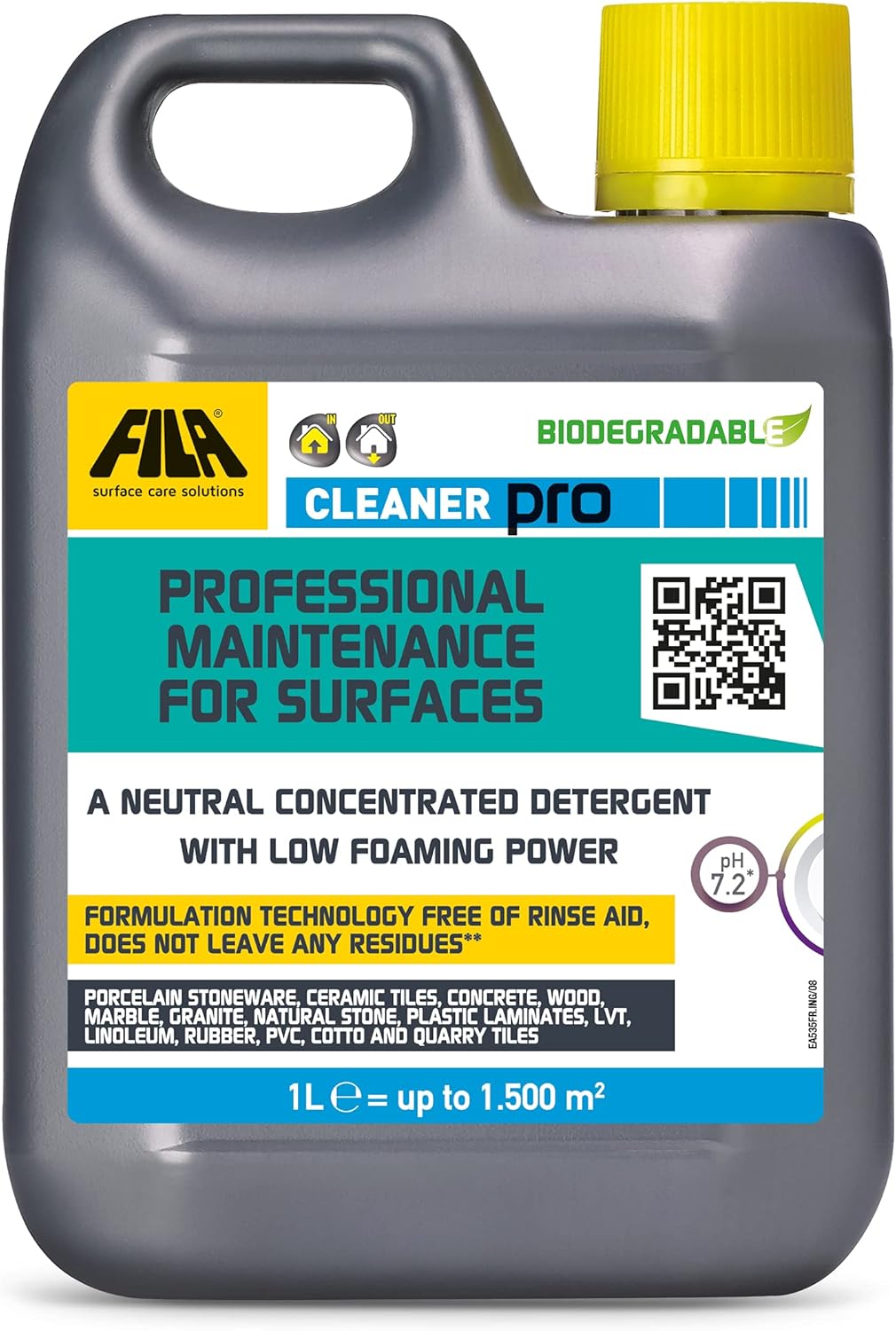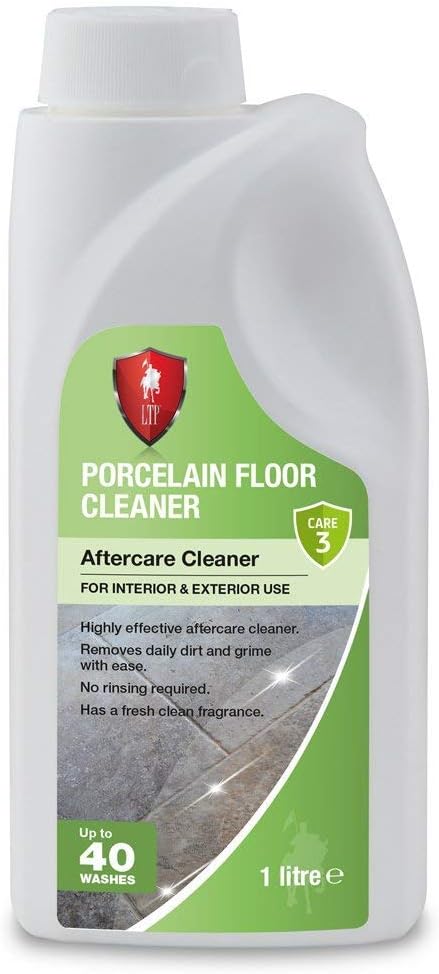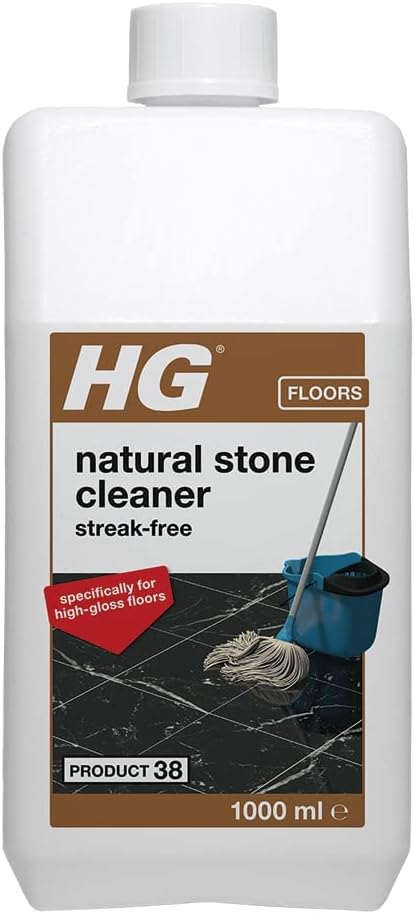Explore the Essentials of Marble Restoration in the UK
Marble Restoration for Damaged Floors in Modern Park: Marble, regarded as a hallmark of elegance and sophistication, holds a significant place in the architectural history of the UK. Its use can be traced back to various historic landmarks, ranging from grand estates to civic buildings, showcasing not only aesthetic allure but also cultural relevance. The restoration of marble in Modern Park exemplifies a dedication to maintaining this rich heritage while enhancing contemporary usability and accessibility. As we explore the significance of marble restoration in the UK, we reveal its historical context, the prevalent factors contributing to damage, and the effective techniques utilised for its careful restoration.
Unveiling the Historical Importance of Marble
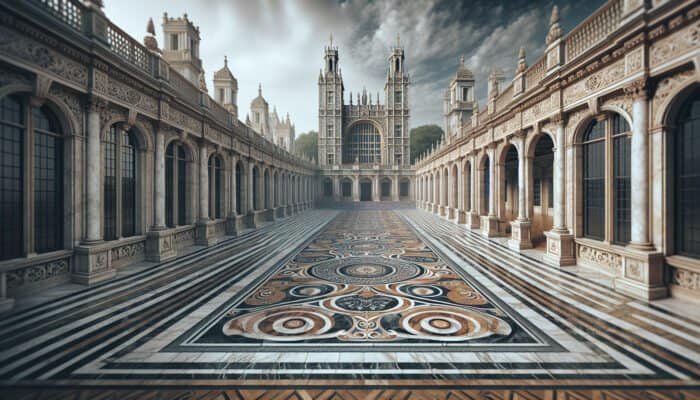
The historical utilisation of marble in the UK spans many centuries, with renowned structures such as the British Museum and Westminster Abbey illustrating its timeless beauty. These monuments not only reflect the artistic prowess of their eras but also serve as essential connections to our national identity. The intricate craftsmanship and elaborate designs found in marble installations provide a glimpse into the historical significance and the importance placed on both durability and aesthetic appeal. Engaging in marble restoration is not just about maintenance; it is a vital act of preserving our collective heritage. Each restoration project enriches the narrative of our history, ensuring that future generations can appreciate the artistry and historical context embedded in these remarkable surfaces.
Identifying Common Causes of Marble Damage
The marble floors throughout the UK are subject to various challenges that can lead to deterioration over time. For instance, weathering can result in surface erosion, especially in areas exposed to harsh climatic conditions. Rainwater, when combined with pollutants, accelerates this process, leading to unsightly discolouration and compromising structural integrity. Furthermore, heavy foot traffic in bustling areas can cause unsightly scratches and scuffs, undermining the marble's polished finish. Recognising these prevalent causes is vital for effective restoration. By understanding that the restoration of marble must encompass both aesthetic and structural concerns, professionals can devise comprehensive restoration strategies tailored to address specific types of damage.
Effective Techniques for Marble Restoration
The methods utilised for Marble restoration in the UK are varied and highly specialised. The initial step typically involves thorough cleaning, employing techniques such as steam cleaning or specific chemical treatments that effectively eliminate stains without harming the marble surface. Following cleaning, professionals may perform honing, which refines the marble surface and eradicates superficial scratches. For deeper imperfections, techniques like polishing are used to restore the original lustre, making the marble appear rejuvenated. In cases of significant damage, such as cracks or chips, epoxy fillers are employed to restore structural stability. These carefully executed methods ensure that the restoration of damaged floors adheres to both aesthetic and functional standards, preserving the beauty and historical significance of these marble surfaces.
Understanding Regulatory Considerations in Marble Restoration
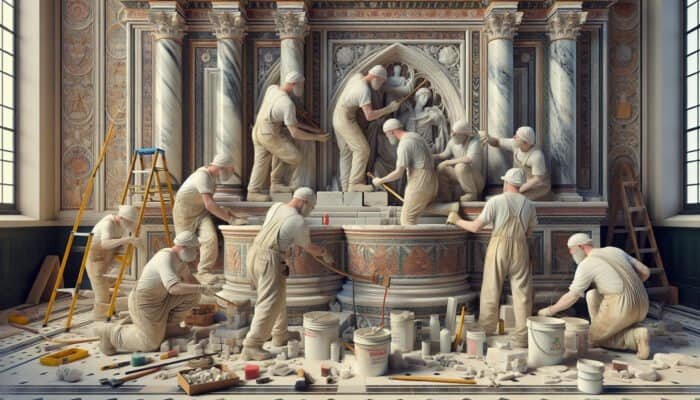
In the UK, marble restoration is governed by a range of regulations aimed at preserving the historical integrity of buildings and materials. The Conservation Principles established by Historic England provide a guiding framework for restoration activities, emphasising the importance of maintaining authenticity and historical context. Additionally, local planning regulations often dictate the materials and methods permitted for use in restoration projects. Familiarity with these legal frameworks is crucial for restoration companies, ensuring compliance and safeguarding the cultural significance of projects such as the restoration of marble. This compliance not only protects the materials involved but also honours the legacy of the sites being restored.
Learning from Successful Marble Restoration Case Studies
Analysing successful marble restoration projects within the UK provides invaluable insights into effective best practices. For example, the restoration of the marble floors at the Victoria and Albert Museum involved extensive cleaning and meticulous restoration of intricate designs, resulting in a revitalised vibrancy that draws visitors. Another noteworthy example is the restoration of the marble entrance at the National Gallery, where experts skillfully combined traditional methods with modern technology to achieve remarkable results. These case studies underscore the diverse techniques employed and the positive outcomes achieved, reaffirming the critical role of professional expertise in restoring marble.
Pro Tip: Recommended Products for Daily Marble Maintenance
In-Depth Case Studies of Marble Floor Restoration
Comprehensive Restoration Efforts at Buckingham Palace
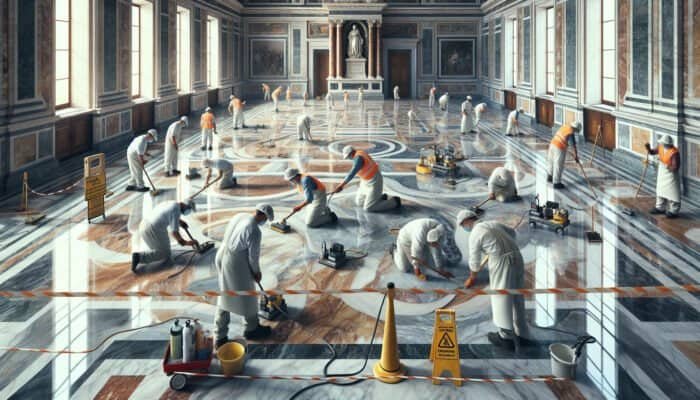
A prime illustration of marble restoration is the ongoing efforts at Buckingham Palace, where the marble floors demand continuous attention due to their historical significance and high levels of foot traffic. The restoration techniques applied here involve meticulous cleaning to eliminate years of grime and stains, followed by honing to rejuvenate the marble’s surface. Moreover, restoration specialists encounter challenges such as maintaining the palace’s historical accuracy while seamlessly integrating modern cleaning technologies. By investing in these restoration efforts, Buckingham Palace not only preserves its regal image but also ensures the safety and comfort of its visitors, making it a standout example of effective marble restoration.
Pursuing Historical Integrity at Westminster Abbey
The restoration of marble floors at Westminster Abbey serves as a testament to the unwavering commitment to historical accuracy. The Abbey’s cultural significance necessitates meticulous consideration of the restoration techniques employed. This project involved extensive research into the original materials and methods used, ensuring that the restoration aligns with the Abbey’s storied past. This case exemplifies the delicate balance of maintaining authenticity while executing restoration work. The project’s achievements reinforce the importance of restoring the marble floors within the broader context of cultural heritage preservation, reminding us of the critical need to safeguard our historical landmarks.
Innovative Approaches at The British Museum
At the British Museum, the restoration of marble floors presents unique challenges and opportunities. The museum's commitment to public access necessitates that restoration efforts be conducted in a manner that minimally disrupts visitors. Innovative techniques, such as non-invasive cleaning methods and temporary flooring solutions, have been successfully implemented. This strategy ensures that the museum remains operational while its marble floors undergo essential restoration. The British Museum’s initiatives exemplify how the restoration of marble can harmoniously coexist with modern public engagement, allowing for both preservation and accessibility in one of the UK‘s most cherished cultural institutions.
Selecting the Ideal Restoration Company
Importance of Accreditation and Experience in Restoration
Choosing the right restoration company is paramount for the success of any marble restoration project. Accreditation is a vital criterion, as it ensures that the company adheres to industry standards and best practices. In the UK, organisations such as the Stone Federation Great Britain provide accreditation that signifies a company's commitment to quality and professionalism. Additionally, experience is equally significant; companies with a proven history in marble restoration understand the specific nuances of different marble types and the unique challenges encountered in various environments. By prioritising accredited and experienced professionals, clients can guarantee that the restoration of the marble is conducted to the highest standards.
Assessing Techniques and Equipment for Restoration Projects
When evaluating potential restoration companies, it is essential to scrutinise the techniques and equipment they employ. Modern restoration demands specialised tools and innovative methodologies to achieve the best outcomes. Companies that invest in cutting-edge equipment, such as diamond polishing pads and advanced cleaning systems, can deliver superior results compared to those utilising outdated methods. This modernisation not only enhances the quality of the restoration but also reduces potential harm to the marble. Understanding the equipment and techniques employed by a prospective company ensures that the chosen specialists are well-prepared to manage the complexities associated with restoring marble floors at Modern Park, particularly in areas that have been damaged.
Evaluating Customer Feedback and Detailed Case Studies
Customer reviews and comprehensive case studies are invaluable resources when assessing the reputation of marble restoration companies. Positive testimonials from previous clients offer valuable insights into the quality of work and level of customer service provided. Furthermore, detailed case studies that outline specific projects, including the challenges faced and the solutions implemented, effectively showcase the company's capabilities. By examining these factors, clients can make informed decisions when selecting a restoration partner, ensuring that their project is handled with the utmost care and expertise. This diligence is particularly crucial for significant undertakings, such as the restoration of marble in Modern Park, where the stakes are exceptionally high.
Understanding Cost Implications for Marble Restoration
Key Factors Influencing Restoration Costs
Understanding the various factors that influence the costs associated with marble restoration is critical for effective budgeting. The severity of damage is a primary consideration; minor cleaning and honing are generally less expensive than extensive repairs that involve replacing damaged sections. Additionally, the project's location within the UK can affect costs due to regional variations in labour and materials. The type of marble also plays a crucial role; rare or exotic varieties may require specialised care, which can increase overall expenses. By recognising these variables, clients can better prepare financially for the restoration of Marble Modern Park, ensuring they allocate sufficient resources to achieve the desired results.
Strategic Budgeting for Restoration Projects
Formulating a budget for marble restoration projects necessitates thorough planning and evaluation of potential costs. Begin by gathering quotes from multiple restoration companies, ensuring you obtain a detailed breakdown of the services they provide. This transparency allows for accurate comparisons and helps identify any hidden costs. Additionally, it is prudent to incorporate a contingency fund within your budget to account for unforeseen complications that may arise during the restoration process. By proactively budgeting for the restoration of Marble Modern Park, clients can minimise financial surprises and ensure a smoother restoration experience.
Evaluating Cost Against Value in Restoration
When considering the cost of marble restoration, it is crucial to evaluate the financial investment against the value it brings to the property. Restored marble floors not only enhance the aesthetic appeal of a space but also significantly contribute to its overall value. High-quality restoration can increase property desirability, making it a worthwhile investment for both homeowners and business operators. Moreover, the long-term benefits of maintaining marble surfaces through restoration, rather than neglect, can lead to substantial savings by preventing more severe damage that necessitates costly repairs. This cost-vs-value analysis is particularly pertinent for substantial projects, such as the restoration of Marble in Modern Park, where the benefits can considerably outweigh the initial expenses.
Post-Restoration Maintenance Practices
Implementing Regular Cleaning Routines
Following the successful restoration of marble floors, establishing a consistent cleaning schedule is essential for maintaining their beauty and extending their lifespan. Regular maintenance involves using gentle, pH-neutral cleaning agents specifically formulated for marble, while avoiding harsh chemicals that could damage the surface. Daily sweeping or dust mopping helps eliminate dirt and debris that may scratch the marble, while periodic deep cleaning can refresh its appearance. By implementing these routine cleaning practices, property owners can not only preserve the outcomes of the restoration of Marble in Modern Park but also elevate the overall aesthetic appeal of the space.
Adopting Preventive Measures for Marble Preservation
Preventive measures are vital in protecting marble floors from future damage. Applying protective coatings or sealants can create a barrier against stains, moisture, and dirt, thereby safeguarding the surface from these harmful elements. Additionally, strategically placing mats at entrances and high-traffic areas can significantly reduce the amount of grit and grime that comes into contact with the marble. Educating residents and visitors about best practices, such as using coasters for beverages and promptly addressing spills, further contributes to the longevity of the marble. By taking these preventive steps, the risk of damage is minimised, ensuring that the restoration of the marble modern park for damaged floors remains intact for many years to come.
Investing in Professional Maintenance Services
Utilising professional maintenance services can be a prudent investment for the ongoing care of restored marble floors. These experts possess the knowledge and skills required to conduct routine maintenance, such as polishing and sealing, to keep the marble in pristine condition. They also provide valuable insights into the specific needs of different marble types and the environments in which they are installed, ensuring that tailored care is delivered. By engaging professional services, property owners can enhance the effectiveness of their maintenance efforts and extend the lifespan of their marble floors, making it a crucial aspect of maintaining Marble in Modern Park.
Conducting Routine Inspections for Early Issue Detection
Regular inspections of restored marble floors are crucial for identifying potential issues before they escalate into more severe problems. Routine assessments allow professionals to evaluate the condition of the marble, spotting any signs of wear, discolouration, or damage. This proactive approach facilitates timely interventions, preserving the integrity of the restoration work. Additionally, regular inspections can provide invaluable feedback on the effectiveness of cleaning and maintenance practices, allowing for necessary adjustments. By prioritising routine inspections, property owners can ensure that the restoration of Marble in Modern Park continues to yield excellent results long after the initial restoration efforts are completed.
Mastering Repair and Restoration Techniques
In the event of future damage, having a solid understanding of repair and restoration techniques is crucial for maintaining the marble’s original appearance. Techniques such as filling cracks with epoxy, re-polishing dull areas, and re-honing surfaces can effectively restore the marble to its former glory. It is essential for property owners to be knowledgeable about these methods and to engage professionals who can execute them competently. Prompt action in addressing damage not only preserves aesthetic appeal but also prevents further deterioration, ensuring that the restoration of Marble in Modern Park remains a source of pride.
Assessing the Environmental Impact of Marble Restoration
Embracing Sustainable Practices in Restoration
Sustainability in marble restoration is increasingly gaining attention throughout the UK. Many restoration companies are adopting eco-friendly practices, including the use of biodegradable cleaning agents and sustainable materials during restoration processes. These environmentally conscious approaches not only protect the integrity of the marble but also reduce the ecological footprint of restoration projects. For instance, employing water-efficient cleaning methods decreases water consumption during the restoration of Marble in Modern Park, aligning with broader sustainability goals in the UK. By prioritising such practices, the marble restoration industry can make a positive contribution to environmental conservation.
Implementing Effective Waste Management Strategies
Effective waste management is a vital aspect of any restoration project. UK restoration companies are increasingly implementing strategies to reduce waste generated during marble restoration. This includes recycling materials whenever feasible and disposing of hazardous waste according to local regulations. By actively managing waste, these companies not only contribute to environmental sustainability but also enhance their reputation among environmentally conscious clients. A commitment to responsible waste management practices is essential for maintaining the integrity of projects like the restoration of Marble in Modern Park, ensuring minimal environmental impact.
Reducing Carbon Footprint in Restoration Processes
The carbon footprint associated with marble restoration processes is a significant consideration in today's environmentally conscious climate. Restoration companies in the UK are exploring methods to reduce their carbon emissions, including the use of energy-efficient machinery and sourcing local materials to minimise transportation-related emissions. Furthermore, the integration of green technologies can further mitigate environmental impact. By proactively addressing carbon emissions, these companies contribute to a more sustainable future while enhancing the appeal of their services. This focus on carbon footprint reduction is particularly significant for comprehensive projects, such as the restoration of Marble in Modern Park, where environmental implications can be considerable.
Minimising Water Usage in Restoration Practices
Water usage is another crucial factor in evaluating the environmental impact of marble restoration. Companies are adopting strategies to reduce water consumption during cleaning and restoration processes. Techniques such as steam cleaning utilise less water than traditional methods while achieving effective results without damaging the marble. Implementing water-saving technologies can significantly decrease overall consumption and bolster sustainability efforts. For the restoration of Marble in Morden Park, minimising water usage not only conserves this precious resource but also aligns with broader environmental objectives in the UK.
Mitigating Biodiversity Impact during Restoration Activities
The impact of marble restoration activities on local ecosystems and biodiversity is often overlooked. Restoration projects involving outdoor marble installations must consider the potential impact on surrounding flora and fauna. To mitigate any adverse effects, restoration companies are increasingly adopting eco-friendly practices that protect local ecosystems. By implementing responsible strategies, such as utilising non-toxic materials and preserving natural habitats during restoration, they can ensure that the restoration of Marble in Morden Park aligns with biodiversity conservation efforts. This holistic approach contributes to the sustainability of both the restoration industry and the environment.
Emerging Trends in Marble Restoration
Harnessing Technological Advancements
The future of marble restoration in the UK is set to benefit from rapid technological advancements. Emerging technologies, such as 3D scanning and artificial intelligence, are beginning to influence restoration practices. These innovations enable restoration professionals to assess damage with greater accuracy and develop tailored restoration plans that optimise results. Moreover, advancements in cleaning technology, including automated cleaning systems, are making it easier to maintain marble surfaces efficiently. As these technologies become more widely adopted, they promise to enhance the effectiveness and precision of restoring marble in Modern Park, ushering in a new era for the industry.
Balancing Preservation with Modernisation
A significant discussion within the realm of marble restoration revolves around the equilibrium between preservation and modernisation. As restoration techniques evolve, there is a growing temptation to incorporate contemporary elements that may compromise historical authenticity. The challenge lies in discovering innovative solutions that respect the original design while embracing modern functionality. This discourse is especially relevant to projects like the restoration of Marble in ModernPark, where professionals must navigate the delicate balance of preserving heritage while introducing modern enhancements. Achieving this balance is crucial for preserving the integrity of historical sites while ensuring their continued relevance in today’s context.
Importance of Training and Education in the Industry
As the marble restoration industry continues to evolve, the significance of training and education for professionals cannot be overstated. Advanced training programmes and workshops focused on new restoration techniques, materials, and technologies are essential for equipping professionals with the necessary skills to tackle modern challenges. Educational initiatives, such as collaborations with universities and industry organisations, can nurture a new generation of skilled restorers dedicated to excellence. Ensuring that professionals are well-versed in evolving practices will ultimately enhance the quality of projects, such as the restoration of marble in Modern Park, benefiting the industry as a whole.
Sustainability as a Central Theme in Marble Restoration
As we look ahead, sustainability will continue to be a pivotal theme in shaping the future of marble restoration. The industry is likely to witness an increasing emphasis on eco-friendly practices, ranging from the materials utilised to the techniques employed. Restoration companies that embrace sustainable practices will not only appeal to environmentally conscious consumers but also contribute to broader environmental goals. This commitment to sustainability is particularly relevant for significant projects, such as the restoration of Marble in Morden Park, where preserving both heritage and the environment is of utmost importance. As these trends evolve, the marble restoration industry will establish itself as a leader in sustainable practices.
Frequently Asked Questions About Marble Restoration
What is marble restoration?
Marble restoration encompasses the processes of repairing, cleaning, and polishing marble surfaces to restore their original beauty and functionality, often addressing damage caused by wear and tear.
Why is marble restoration necessary?
Restoration is crucial for preserving the aesthetic and structural integrity of marble, thereby safeguarding its historical value and extending its lifespan.
How can I prevent damage to my marble floors?
Implementing regular cleaning, applying protective coatings, and avoiding harsh chemicals can effectively prevent damage to marble floors.
What techniques are commonly used in marble restoration?
Standard techniques include cleaning, honing, polishing, and repairing cracks or chips with epoxy fillers.
How much does marble restoration typically cost?
Costs can vary based on the extent of damage, the type of marble, and the location, with minor repairs generally being less expensive than extensive restoration projects.
How long does the restoration process take?
The duration of marble restoration can differ significantly, ranging from a few hours for simple cleaning to several days for comprehensive restoration efforts.
Can I restore the marble myself?
While homeowners can manage minor cleaning tasks, professional restoration is advisable for significant damage to ensure high-quality results.
What should I look for in a reputable restoration company?
Select a company with proper accreditation, extensive experience in marble restoration, and positive customer reviews to guarantee quality work.
How often should I have my marble floors restored?
The frequency depends on foot traffic and wear; however, conducting annual assessments of marble floors can help determine when restoration is necessary.
What are sustainable practices in marble restoration?
Sustainable practices encompass using eco-friendly cleaning agents, minimising water usage, and responsibly managing waste generated during the restoration process.
The post Restoration of Marble in Modern Park for Damaged Floors appeared first on https://tilecleaningsurrey.co.uk
